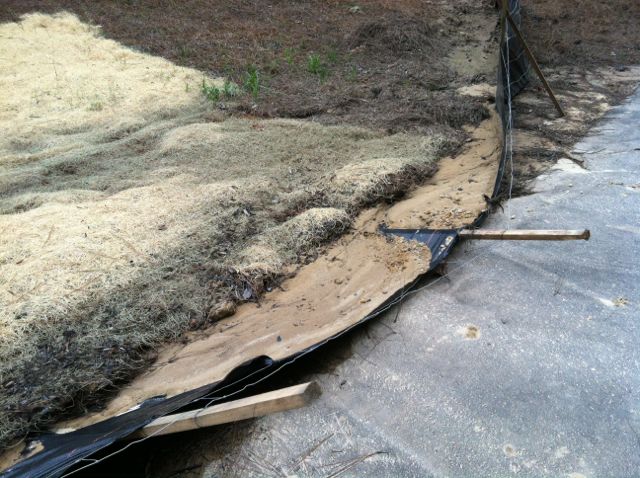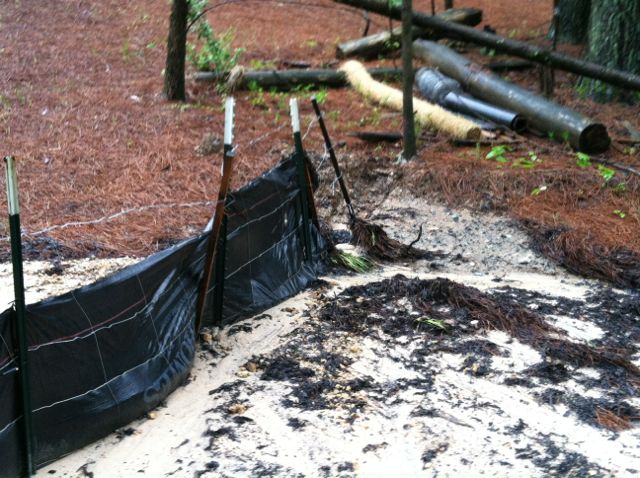Chapel Hill experienced a “high intensity rainfall” on June 30th. While it’s no surprise when a series of storms cause gushing rain water to leap out of culverts and normal channels, the flash flood that followed was the surprise. It arose and disappeared quickly but it damaged homes, eroded hillsides and yards, and felled trees by eating away their root system. The damage will not be easily repaired.
It’s simple physics — when the rate of rainfall exceeds the drainage capacity of a given area, then water gushes downhill way faster than the channels can handle. The more water, the faster it moves. And it gushes faster still if it hits roof tops, roads, and parking lot or any hard surface instead of sinking into a forest floor to replenish ground water supplies. Chapel Hill’s latest strategy has been to require stormwater facilities on new development that will mimic nature by slowing rainwater and keep it on site. Clearly this was not possible in a 6 inch rainfall. But this 25 year storm damage suggests that we need to reevaluate our current infrastructure to see how we can prevent a re occurrence of this damage. Our regulations require only that development projects control for volume for the two year storm.
Here is a pictorial story of the rain garden that was intended to capture some of the stormwater from the roof of the beautiful new Chapel Hill Public Library. Sadly, this brand new stormwater facility failed even before the flood in late July, sending stormwater and sediment down hill, scouring the woods and Bolin Creek. See the recent story in the Chapel Hill News.
In the next two pictures we see the Children’s wing of the Library, the rain garden below before the flood. Already this structure is failing.
 A neighbor contacted Town stormwater staff on June 25 but no repairs were made. Until the Towns approve the completed permanent stormwater facilities, Orange County is the enforcing authority. Recent staff cuts have made it difficult for all the active projects in Orange County to be monitored and inspected.
A neighbor contacted Town stormwater staff on June 25 but no repairs were made. Until the Towns approve the completed permanent stormwater facilities, Orange County is the enforcing authority. Recent staff cuts have made it difficult for all the active projects in Orange County to be monitored and inspected.
Then on June 30 came the 6 inches of rain in 2 hours washing sediment down to the tributary feeding Bolin Creek. Sediment is the #1 pollutant that harms water quality. It’s doubtful a model stormwater facility would have prevented the flooding downstream, but it might have helped reduce the impact on Camelot Apartments.
David Tuttle supplied these pictures. In all the years he has lived near these woods he has not seen the forest floor laid bare until this “incident”. Until the Town plans for a place for the rainwater to go in our intrastructure, including the correct design, building and upkeep of appropriate stormwater structures, we can anticipate this will not only happen again, but flooding will increase in magnitude as our Town’s impervious footprint grows.





